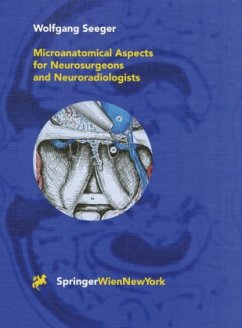For many years Professor Seeger has held microanatomical courses for young neurosurgeons and neuroradiologists. Many ideas in his new book have developed from discussions with experienced colleagues and young residents. The author presents anatomical variations from the normal anatomy which may necessitate a modification of the standard operative procedure. Special emphasis is put on the presentation of the temporal lobe and the potential anatomical causes for complications during amygdala-hippocampectomies (hemiparesis, aphasia, neuropsychological syndromes) are shown.
Special radiological projections are complemented by anatomical drawings of fine strucures like N. oculomotorius and N. opticus and presentations of the hippocampus or the Circle of Willis. For the first time Professor Seeger s well known drawings are supplemented by the use of colour.
Special radiological projections are complemented by anatomical drawings of fine strucures like N. oculomotorius and N. opticus and presentations of the hippocampus or the Circle of Willis. For the first time Professor Seeger s well known drawings are supplemented by the use of colour.
"... This is a valuable book for neurosurgeons and neuroradiologists." British Journal of Neurosurgery 2001; 15 (01) "... truly a monumental volume. It is beautifully illustrated and a pleasure to handle ..." Journal of Neurology, Neurosurgery, and Psychiatry 2001/70 "... This book is the result of a large experience and presents numerous illustrations which speak for themselves ... Wolfgang Seeger's book, thanks to its simplicity, pedagogical efficiency and to the enormous amount of knowledge it gathers, can be one of the 'companion guides' of the practitioner neurosurgeon. It will also be very useful to the neuroradiologist who will know more about the technical preoccupations of the neurosurgeon beyond the mere diagnosis of the lesion and about the elements the neurosurgeon needs to visualise in order to perform surgical gestures in the best conditions possible." Surgical and Radiologic Anatomy, Heft 3 & 4/2000

